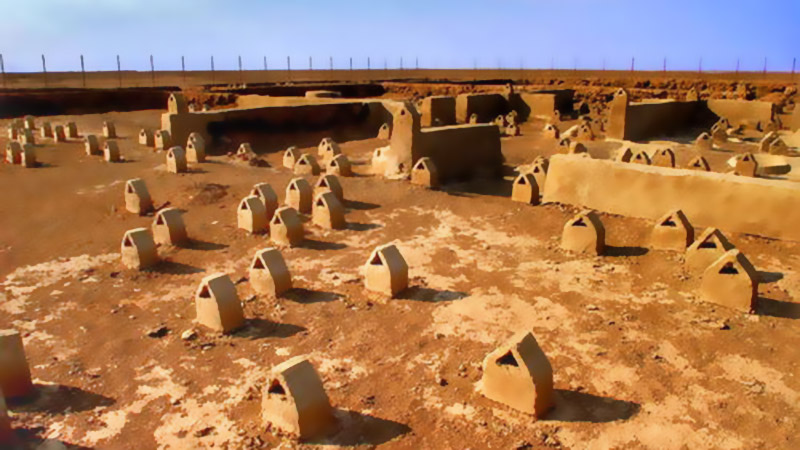 Signin with Google
Signin with Google Signin with Facebook
Signin with Facebook
 Places,History
Places,HistoryShahr- i Sokhta, a City with Speaking Burial Graves

"Shahr-e Sokhteh" is those kinds of places that hold the mystery of ancient civilizations and the story of mankind. Located in the remote lands of Sistan and Baluchistan province, on the road between Zabol and Zahedan, the ancient majestic city is now stripped away by the winds, in the silence of the waterless lands.
Here lie more than 5000 years of civilization, on the largest and richest Bronze Age site in Iran. Remains buried in the soil of this dry landscape narrate the story of the birth of an independent civilization and one of the first complex societies in the region. The site, which spreads over 151 hectares, was one of the world's largest cities five centuries ago. The mudbrick city, with its ochre and frail alleys, is divided into several parts with a residential area that reached more than 80 hectares at the culmination of this civilization. Back then, the powerful city would reign over not less than 300 villages around.

An advanced and skilled civilization
Other sections of the site recall the curious story of its inhabitants. In the Craftsmen Quartier, the ground is covered by thousands of pottery's fragments. People who would not work in the fields of what was once a fertile land would produce goods later traded in the whole of Mesopotamia. Inspired by nature and the life surrounding them, craftsmen have created what is known as the first drawing animation, painted on a pottery vessel.
It's not the sole astonishing discovery made by archaeologists there. More than one million objects have been collected, among which is the oldest board game. Even more impressive is the discovery of traces of brain surgery, and the world's earliest known artificial eyeball, which testifies from the great knowledge humans have started to gather at the dawn of the urban era. Thanks to the seal on their graves, it has also been demonstrated that women were in charge of the financial matters of this major city, a rare fact in such ancient times.

UNESCO identifies the rich source of Shahr-e Sokhte structure in the well-preserved location of dry soil with its burial grounds and artworks unearthed from there to be listed as a world heritage site.
The mysterious fall of the "Burnt City"
Shahr-i Sokhta has just started to deliver some of its secrets, and many haven't been discovered yet. For almost a century, the site continues to attract archaeologists from all over the world, eager to find other clues in what constitutes the story of mankind. Archaeologists still excavate through the crypt graves and find skeletons buried in them.
The name of the city itself holds its most preserved mystery: "Shahr-e Sukhteh" means the "Burnt City". During its long history, the site has been gutted by the flames three times. However, it might not be the fire that led to the abandonment of the city.
Some hypothesis explains that climate change and drought may have caused the migration of its inhabitants. Other scientific evidence suggests that a rare disease has infected the population at some point. As no weapon has been found, others also believe that this peaceful society has been wiped out by another group of people. Nevertheless, the reasons for the fall of the glorious "Burnt city" remain, for now, wrapped in mystery.

